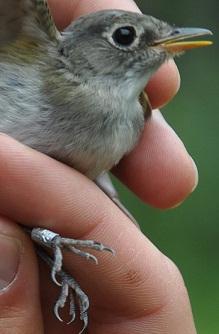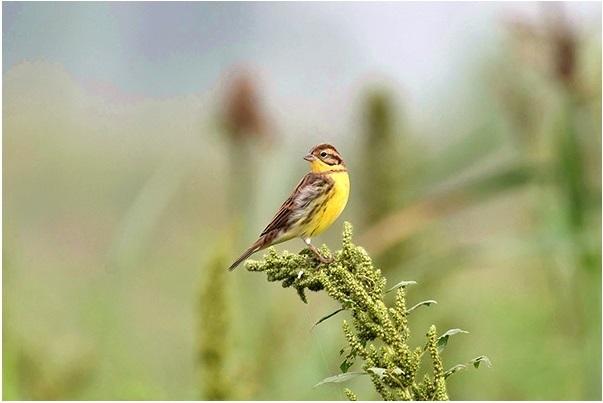
May 12 is World Migratory Bird Day (WMBD). In fact, the day that follows, May 13 also is part of the WMBD. This year WMBD is important for more than one reason. The first and the foremost is that this year the focus is on unifying the planet’s major bird corridors or flyways—the African Eurasian Flyway, the East Asian-Australasian Flyway and the American Flyway. The WMBD 2018 has “Unifying our voices for bird conservation” as its theme.
WMBD 2018 is significant again, as it is for the first time that two major bird conservation days, the International Migratory Bird Day and the World Migratory Bird Day, have been combined. This was decided in October last year at the Convention of Migratory Species (CMS COP 12), held at the Philippines capital, Manila. The new partnership, it has been said, is a “bid to strengthen global recognition and appreciation of migratory birds and highlight the urgent need for their conservation”.
Spreading Awareness
It has also been decided that WMBD will be observed again in the year on the second Saturday in October. The activities of these days would focus on education on migratory birds and spreading awareness about the need to protect their habitats and flyways. As many as 2000 species of birds, that is 20 per cent of all known bird species, make regular seasonal movements.

Migration is an activity akin to both humans and animals. Bird migration is a regular seasonal movement, along the flyways and between the breeding and wintering grounds. There are many states identified with bird migration and Rajasthan used to be known for the winter sojourns of the rare Siberian cranes in the Keoladeo National Park, Bharatpur every year till the turn of the century.
Other well known winter migrants include the highly threatened Yellow breasted bunting, Amur falcon, Sociable lapwing, Blackpoll warbler, Rufous hummingbird, Ruff, Black winged stilt, Common teal, Common green shank, Northern pintail, Yellow wagtail, White wagtail, Rosy pelican, Gadwall, Wood sandpiper, Spotted sandpiper, Eurasian Wigeon, Black tailed godwit, Blue throat, Long billed pipit and Starling. Among the summer migrants are Asian koel, Black crowned night heron, Eurasian golden oriole, Comb duck, Blue cheeked bee eater, Blue tailed bee eater and Cuckoos. Demoiselle cranes, popularly called 'kurja', come to India from Mongolia.
The Red Knot is an iconic American species which travels nearly 14000 kms each spring from the base of Argentina to Canadian Arctic in order to breed. At the turn of the century over 50,000 Red Knots wintered at Tierra del Fuego in Argentina. Aerial surveys in 2017 indicated a disturbing development about their population—there were fewer than 9,000 of them, an all time low.

Birds are categories into “local” and “migratory” going by their habitats, movement and breeding locations. ”Do remember, this is a mistake often committed by most people, including the press reporters. Migratory birds are those which do not breed in places of their migration. As for those migrating to India they may breed over the Himalayas, in Tibet/Ladakh, or North West Frontier areas in Pakistan and Afghanistan or further up in Siberia or China or Mongolia”, observes eminent conservationist Harsh Vardhan.
Facing Threats
Migration is beset with perils for the birds. Bird migration, driven by weather conditions and food availability, carries high cost of predation and mortality. The migratory birds face threats from poachers and degradation of flyways and habitats along the route. The loss of critical stopover sites such as coastal wetlands, marshes, illegal killing, poisoning, tourism and poor waste management are some of the aspects endangering their lives. According to Birdlife International more than 40 per cent of the migratory birds are declining and nearly 200 are now classified as threatened.

“Birds are doing their best to find ways to live among people, but they are birds after all—they don’t know how to navigate human dominated landscapes,” points out David Yarnold of the Birdlife USA.
In these perilous times for migratory birds, how to keep a track on their flyways, habitats and their well being through the journeys, at times involving thousands of kilometers? “Bird banding or ringing is the most ideal tool to ascertain which bird migrated to which destination and took how many days to do so. This scientific procedure reveals status of any species, declining or being all right. It is done all over the world,” Harsh Vardhan notes. However, sadly in India it is not being carried out. “The Bombay Natural History Society (BNHS) is the sole agency to do it. It is neither doing itself nor allowing others to do so. Can we amend the current practice to enable young bird watchers join this work? It can be an exciting new profession for many,” he argues.
BY NEWSBEE
First published: 12 May 2018, 20:20 IST







![BJP's Kapil Mishra recreates Shankar Mahadevan’s ‘Breathless’ song to highlight Delhi pollution [WATCH] BJP's Kapil Mishra recreates Shankar Mahadevan’s ‘Breathless’ song to highlight Delhi pollution [WATCH]](http://images.catchnews.com/upload/2022/11/03/kapil-mishra_240884_300x172.png)

![Anupam Kher shares pictures of his toned body on 67th birthday [MUST SEE] Anupam Kher shares pictures of his toned body on 67th birthday [MUST SEE]](http://images.catchnews.com/upload/2022/03/07/Anupam_kher_231145_300x172.jpg)






